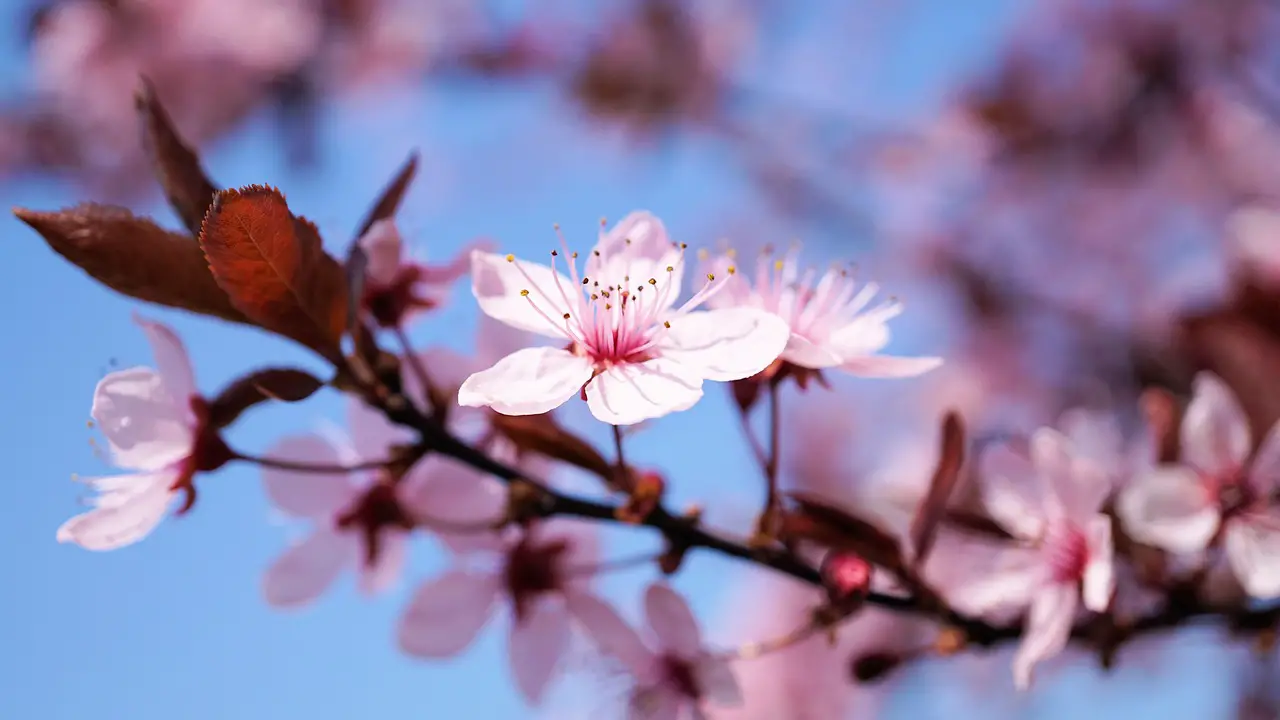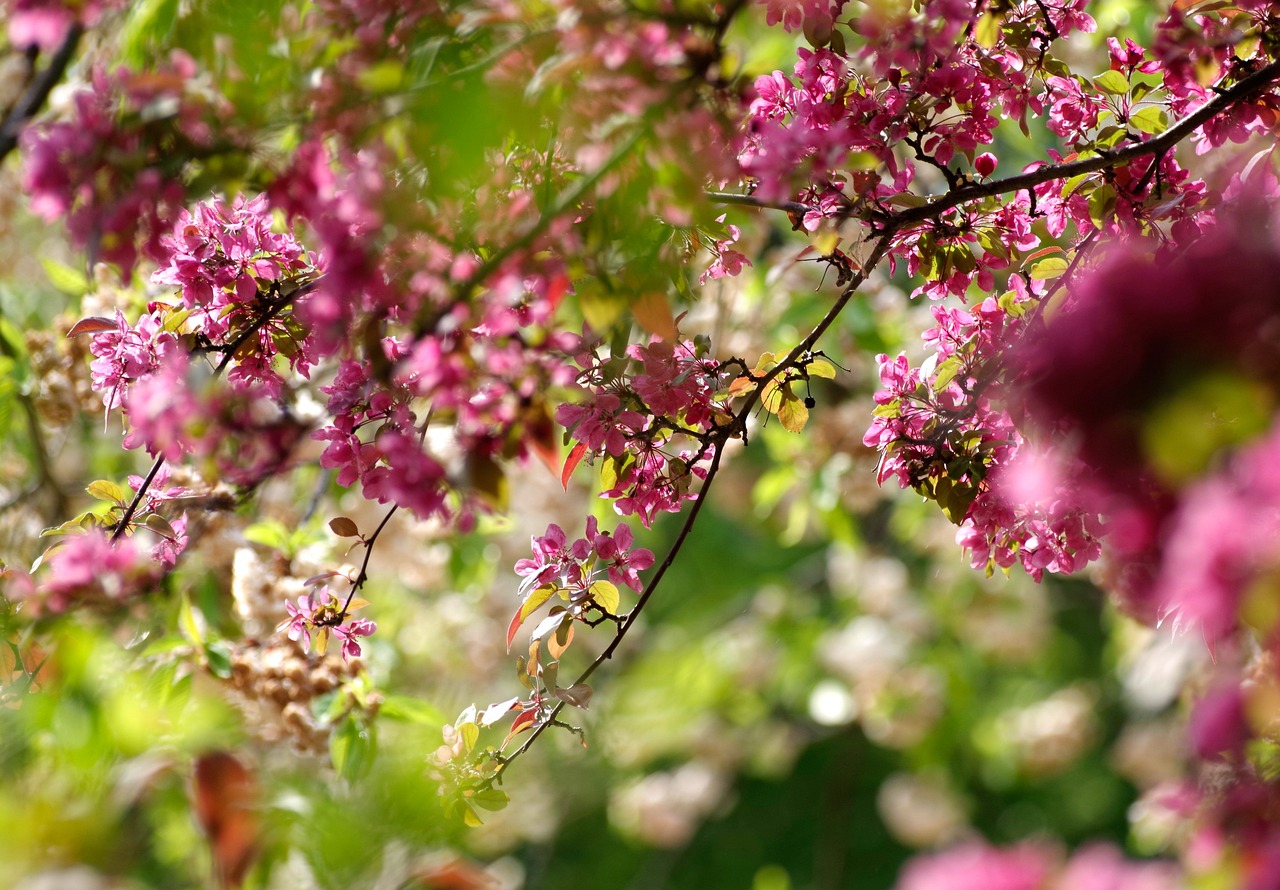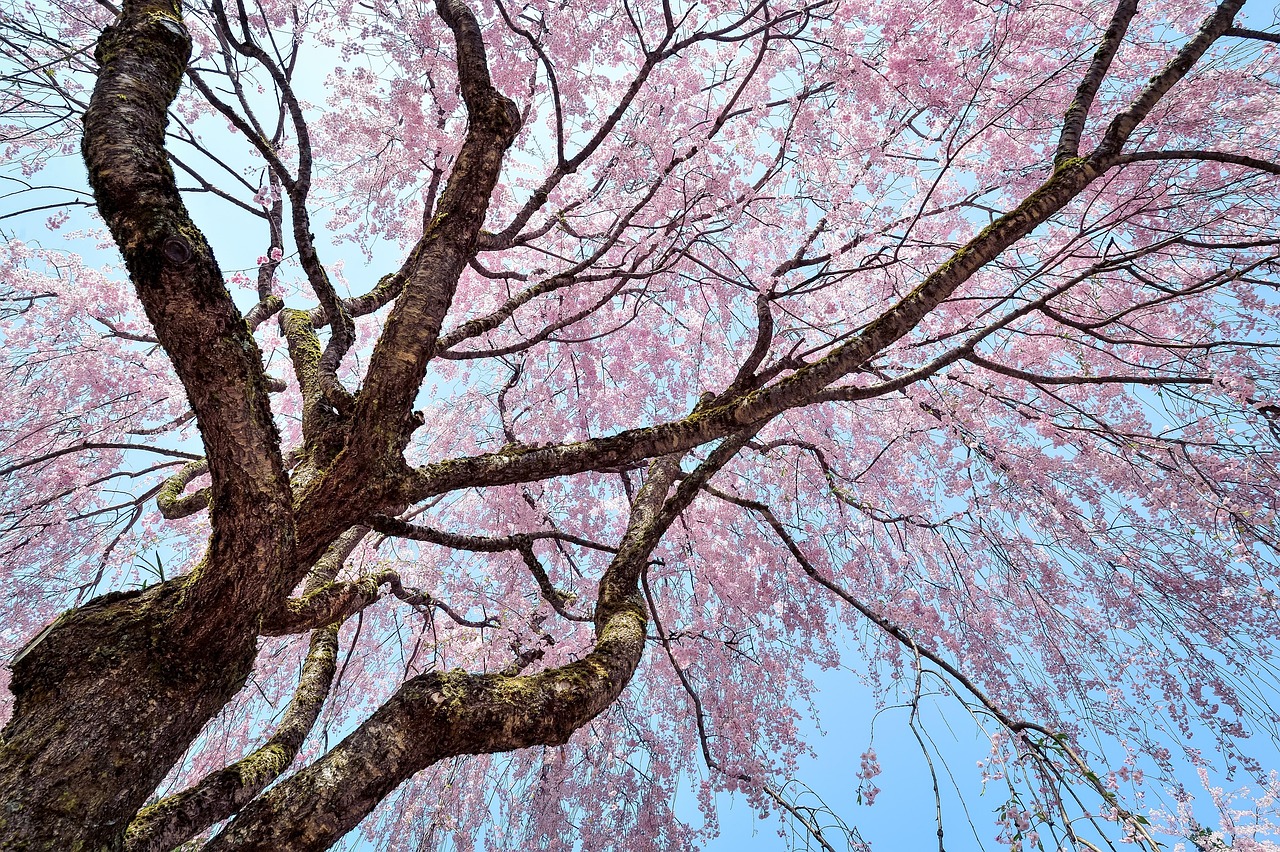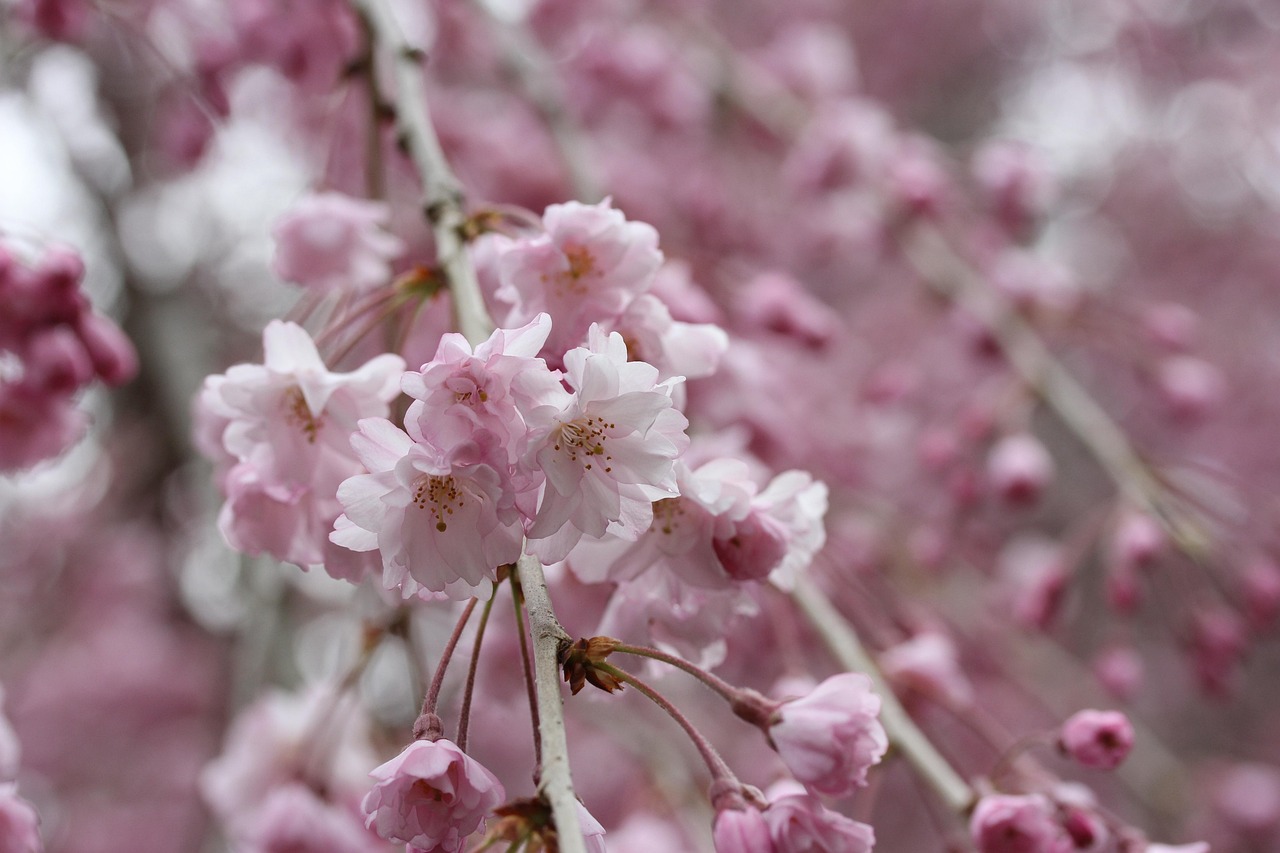Weeping cherry tree pruning enhances the tree’s natural shape and promotes healthy growth. Proper techniques encourage cascading branches, vibrant blooms, and a stunning overall appearance. Regular pruning helps maintain structure while removing dead or diseased wood.
The weeping cherry tree, known for its graceful branches and beautiful blossoms, is a stunning addition to any landscape. Its unique form creates a picturesque scene, especially in spring when the tree bursts into bloom. However, the beauty of this tree is not solely due to its natural growth; proper pruning plays a crucial role in maintaining its aesthetic appeal and health.

Pruning weeping cherry trees is essential for several reasons. First, it promotes healthy growth by removing dead or diseased branches. This not only prevents the spread of disease but also allows more sunlight to reach the tree’s interior, encouraging fuller blooms. Second, regular pruning helps shape the tree, ensuring that it maintains its weeping form. Without proper care, branches can become overgrown or tangled, detracting from the tree’s beauty.
Understanding Weeping Cherry Trees
Before diving into pruning techniques, it’s important to understand the characteristics of weeping cherry trees. These trees typically feature long, drooping branches that create a cascading effect. They can vary in size and shape, but most reach heights of 15 to 30 feet with a spread of 20 to 25 feet.
| Characteristic | Details |
|---|---|
| Height | 15 to 30 feet |
| Spread | 20 to 25 feet |
| Flower Color | Pink or White |
| Bloom Time | Spring (March to April) |
Weeping cherry trees thrive in well-drained soil and prefer full sunlight. They are moderately drought-tolerant but benefit from regular watering, especially during dry spells. Understanding these basic needs will help ensure a healthy tree that showcases its stunning beauty for years to come.

The best time to prune weeping cherry trees is during late winter or early spring before new growth begins. This timing allows gardeners to assess the tree’s structure without the distraction of foliage. Pruning at this time also encourages vigorous growth as the tree emerges from dormancy.
Essential Pruning Techniques
Pruning involves several key techniques that help enhance the weeping cherry’s natural beauty. Each method serves a specific purpose in maintaining the health and aesthetics of the tree.
- Thinning: This technique involves selectively removing branches from the interior of the tree. Thinning improves air circulation and light penetration, promoting overall health.
- Heading: Heading involves cutting back branches to a bud or lateral branch. This encourages new growth and can help maintain the desired size and shape of the tree.
- Deadwooding: Regularly removing dead or diseased branches is essential. This practice prevents pest infestations and diseases from spreading throughout the tree.
- Shaping: To achieve the iconic weeping form, shaping is crucial. Prune longer branches to maintain a balanced appearance while allowing shorter branches to cascade naturally.
When pruning, it’s important to use clean, sharp tools. Clean cuts promote faster healing and reduce the risk of disease. Always make cuts at a slight angle to prevent water accumulation on cut surfaces. Additionally, avoid removing more than one-third of the tree’s total canopy in a single season to prevent shock and stress.

After pruning, observe the tree closely for any signs of stress or disease. Addressing issues promptly can help maintain the health and beauty of your weeping cherry tree. Regular maintenance will allow it to flourish, showcasing its stunning cascading branches and beautiful blossoms each spring.
In summary, understanding the characteristics and needs of weeping cherry trees lays a solid foundation for effective pruning practices. By employing essential techniques such as thinning, heading, deadwooding, and shaping, gardeners can ensure their trees remain healthy and stunningly beautiful for years to come.
The Importance of Timing in Pruning
Timing is a critical factor in the successful pruning of weeping cherry trees. The right moment can significantly impact the health and growth of the tree. Understanding when to prune will help you maximize its beauty and maintain its structural integrity.

Pruning weeping cherry trees should ideally take place during late winter or early spring, just before the tree begins to leaf out. This timing allows for several advantages:
- Minimized Stress: Pruning during dormancy reduces stress on the tree. The weeping cherry can heal more efficiently once it starts to grow again.
- Clear Visibility: Without leaves, it is easier to see the tree’s structure. This visibility aids in making informed pruning decisions.
- Encouraged Growth: Cutting back branches before the growing season stimulates new growth, enhancing blooming potential.
While late winter to early spring is optimal, it is also essential to consider regional climate variations. In warmer areas, pruning can occur as early as February, while in colder regions, March may be more suitable. Always pay attention to local weather patterns when planning your pruning schedule.
Pruning Tools and Techniques
Using the right tools is vital for effective pruning. Sharp, clean tools ensure that cuts are clean and minimize damage to the tree. Below are some essential tools and their uses:
| Tool | Purpose |
|---|---|
| Pruning Shears | For cutting small branches (up to ¾ inch in diameter). |
| Loppers | Ideal for medium-sized branches (up to 1.5 inches in diameter). |
| Saw | For larger branches (over 1.5 inches in diameter). |
| Hedge Shears | Useful for shaping and trimming smaller shoots. |
Regardless of the tools you choose, proper maintenance is essential. Keep blades sharp and clean to prevent disease transfer. After each cut, consider disinfecting your tools with rubbing alcohol or a bleach solution.
Common Pruning Mistakes to Avoid
Even experienced gardeners can make mistakes while pruning weeping cherry trees. Here are some common pitfalls to avoid:
- Over-Pruning: Removing too much foliage can stress the tree and inhibit growth. Aim to remove no more than one-third of the canopy in a single season.
- Poor Cuts: Making flush cuts or tearing bark can harm the tree. Always make cuts at a slight angle just above a bud or lateral branch.
- Ignoring Tree Structure: Failing to consider the natural shape can lead to an unnatural appearance. Maintain the graceful weeping form by pruning with this shape in mind.
- Timing Errors: Pruning too late in spring may remove flower buds and affect blooming. Stick to late winter or early spring for best results.
Seasonal Care After Pruning
After completing your pruning tasks, providing proper care in the following weeks is crucial for recovery and growth. Consider the following practices:
- Watering: Ensure the tree receives adequate moisture, especially during dry spells. Deep watering encourages strong root development.
- Mulching: Apply a layer of mulch around the base of the tree. Mulch retains moisture and suppresses weeds, benefiting overall growth.
- Pest Monitoring: Keep an eye out for pests or diseases that may exploit the tree’s newly pruned state. Early detection is key to preventing infestations.
A well-cared-for weeping cherry tree will reward you with stunning blossoms and cascading branches each spring, making regular maintenance a worthwhile investment of time and effort.
Caring for Weeping Cherry Trees Post-Pruning
Caring for your weeping cherry tree after pruning is just as important as the pruning process itself. The following practices will help ensure the tree remains healthy and beautiful:
- Nourishment: Fertilize the tree with a balanced fertilizer in early spring. This will provide essential nutrients that promote healthy growth and vibrant blooms.
- Regular Inspections: Check for signs of disease or stress after pruning. Look for unusual leaf discoloration, wilting, or pests.
- Proper Watering: Maintain consistent watering during dry periods. Young trees require more water as they establish their root systems.
A proactive approach to care will enhance the longevity and beauty of your weeping cherry tree, ensuring it remains a stunning focal point in your landscape for years to come.
Common Pests and Diseases Affecting Weeping Cherry Trees
While weeping cherry trees are generally hardy, they can be susceptible to specific pests and diseases. Understanding these threats is essential for maintaining the tree’s health and vitality. Early detection and treatment can prevent significant damage.
Pests
Several pests can affect weeping cherry trees, leading to weakened growth and reduced flowering:
- Cherry Slug: This pest resembles a slug and feeds on the leaves, creating holes and a lace-like appearance. They are often found on the undersides of leaves.
- Spider Mites: These tiny pests can cause yellowing leaves and webbing. They thrive in dry conditions, making regular watering an essential preventive measure.
- Aphids: These small, soft-bodied insects can cluster on new growth, sucking sap. Infestations may cause curled leaves and stunted growth.
- Scale Insects: These pests attach to branches and leaves, often appearing as small bumps. They can weaken the tree by feeding on its sap.
Diseases
Weeping cherry trees may also face various diseases that can impact their health:
- Powdery Mildew: This fungal disease manifests as a white powdery substance on leaves. It often occurs in warm, dry conditions and can lead to leaf drop.
- Cankers: Canker diseases cause sunken lesions on branches and stems. They can lead to dieback if not treated promptly.
- Root Rot: Caused by excessive moisture, root rot affects the tree’s roots, leading to decline. Signs include yellowing leaves and wilting.
- Black Knot: This fungal infection appears as black swellings on branches. It can severely damage the tree if not managed properly.
Preventive Measures for a Healthy Weeping Cherry Tree
Preventing pests and diseases is always better than dealing with infestations or infections after they occur. Here are some effective strategies:
- Proper Watering Practices: Water the tree deeply but infrequently to encourage strong root development. Avoid wetting the foliage to minimize disease risk.
- Mulching: Applying a layer of organic mulch around the base of the tree helps retain soil moisture and suppresses weeds that may harbor pests.
- Regular Inspections: Routinely check the tree for signs of pests or diseases. Early detection is key to effective management.
- Cultural Practices: Maintain good air circulation around the tree by avoiding overcrowding with other plants. Pruning helps improve airflow.
Fertilization for Optimal Growth
Fertilizing weeping cherry trees enhances their growth and flowering potential. Proper fertilization practices ensure that the tree receives the necessary nutrients to thrive.
Choosing the Right Fertilizer
Selecting an appropriate fertilizer is important for the health of your tree. A balanced fertilizer, such as a 10-10-10 or 15-15-15 NPK (Nitrogen-Phosphorus-Potassium) formula, works well for weeping cherry trees. Here are some tips for fertilization:
- Timing: Apply fertilizer in early spring as new growth begins. This timing aligns with the tree’s natural growth cycle.
- Application Method: Spread the fertilizer evenly around the base of the tree, avoiding direct contact with the trunk. Water thoroughly after application.
- Organic Options: Consider using organic fertilizers like compost or well-rotted manure to improve soil health and provide slow-release nutrients.
Signs of Nutrient Deficiency
Recognizing signs of nutrient deficiency can help you address issues before they worsen. Common symptoms include:
- Yellowing Leaves: Often indicates nitrogen deficiency or poor soil health.
- Poor Flowering: Limited blooms may suggest inadequate phosphorus levels.
- Pale or Stunted Growth: Could indicate a lack of essential nutrients such as potassium or iron.
The Role of Pruning in Disease Management
In addition to enhancing aesthetics, pruning plays a vital role in managing diseases in weeping cherry trees. Properly executed pruning techniques help reduce disease incidence and promote overall health.
- Removing Infected Branches: Promptly eliminate any infected or diseased branches to prevent the spread of pathogens.
- Improving Air Circulation: Thinning out crowded branches allows better airflow, reducing humidity levels around the foliage and minimizing disease risk.
- Encouraging Healthy Growth: By pruning for structure and form, you support strong growth that is more resilient against pests and diseases.
A proactive approach to pruning, combined with proper care and attention to potential threats, ensures that your weeping cherry tree remains healthy, vibrant, and beautifully cascading throughout its life cycle.
Long-Term Care and Maintenance for Weeping Cherry Trees
In addition to pruning and addressing immediate health concerns, long-term care and maintenance are essential for the continued beauty and vitality of weeping cherry trees. Following a few best practices can help ensure these trees thrive for many years.
Soil Health and Amendments
Soil quality plays a crucial role in the health of weeping cherry trees. Healthy soil provides essential nutrients and supports robust root systems. Here are some tips for maintaining soil health:
- Soil Testing: Conduct soil tests every few years to determine pH levels and nutrient content. This information will guide your fertilization and amendment practices.
- Organic Amendments: Incorporate organic matter such as compost or well-rotted manure into the soil. This enhances soil structure, improves drainage, and boosts nutrient availability.
- Avoid Compaction: Prevent soil compaction around the base of the tree by limiting foot traffic and heavy equipment in the area.
Seasonal Adjustments
Adapting care practices according to the seasons can significantly benefit weeping cherry trees. Seasonal adjustments include:
- Spring: After pruning, apply fertilizer to support new growth. Ensure adequate watering as the tree emerges from dormancy.
- Summer: Monitor for pests and diseases regularly. Water during dry spells and mulch to retain moisture.
- Fall: Clear fallen leaves and debris to reduce disease risk. Consider a light mulching layer to protect roots during winter.
- Winter: Inspect the tree for damage and prepare it for dormancy. Avoid pruning during extreme cold to prevent injury.
Enhancing Aesthetic Appeal Beyond Pruning
While pruning is crucial for maintaining the shape and health of weeping cherry trees, other practices can enhance their aesthetic appeal:
Companion Planting
Choosing the right companion plants can complement the beauty of weeping cherry trees. Consider planting ground covers or flowering perennials that bloom at different times throughout the growing season. This strategy creates a vibrant garden environment that highlights the tree’s cascading branches.
Seasonal Decorations
Weeping cherry trees can also be adorned for special occasions. Adding seasonal decorations, such as festive lights during winter or colorful flower beds in spring, can enhance their visual appeal. Be mindful not to damage the tree while decorating.
Artistic Pruning Techniques
Some gardeners experiment with artistic pruning techniques, creating unique shapes while maintaining the natural beauty of the tree. While this requires skill and practice, it can result in a stunning focal point in your landscape. Consult with a professional if you’re interested in exploring this avenue.
Final Thoughts
Caring for a weeping cherry tree requires a blend of knowledge, skill, and dedication. Through proper pruning, timely interventions against pests and diseases, and thoughtful long-term care practices, you can cultivate a beautiful specimen that enhances your landscape for generations to come. Remember that each tree is unique, so adapting your care to its specific needs will yield the best results.
The cascading beauty of weeping cherry trees is truly remarkable, especially when nurtured through effective care practices. By understanding the importance of timing in pruning, utilizing the right tools, maintaining soil health, and monitoring for threats, you can ensure that your weeping cherry tree remains a stunning centerpiece in your garden.
Ultimately, a well-cared-for weeping cherry tree not only provides aesthetic beauty but also contributes to the biodiversity of your garden environment. It stands as a testament to your gardening efforts and dedication to nurturing nature’s wonders.
As you embark on or continue your journey with weeping cherry trees, remember that patience and consistent care will reward you with breathtaking blooms and cascading branches year after year.
